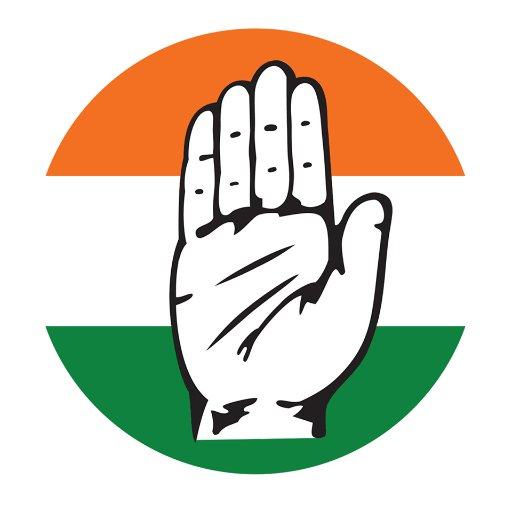Deshbandhu Chittaranjan Das: The Selfless ‘Bhadralok’

- Capt. Praveen Davar
Chittaranjan Das, whose life is a landmark in the history of India’s struggle for freedom, was endearingly called ‘Deshbandhu’ (Friend of the country). Born on November 5, 1870, in Calcutta, he belonged to an upper middle class Vaidya family of Telirbagh in Dacca district. His father, Bhuban Mohan Das, was a reputed solicitor of the Calcutta High Court. An ardent member of the Brahmo Samaj, he was also well-known for his intellectual and journalistic pursuits. Chittaranjan’s patriotic ideas were greatly influenced by his father.
After receiving his early education at the London Missionary Society’s Institution at Bhowanipore (Calcutta), Chittarajan passed the entrance examination in 1885 as a private candidate. He graduated from the Presidency College in 1890. He then went to England to compete in the ICS, but he missed the grade by a very narrow margin. Therefore, he decided to join the Inner temple and was called to the Bar in 1894. It was Bankim Chandra who partly influenced him in his political ideas. While at the Presidency College, Chittaranjan was a leading figure of the Student’s Association; and from Surendranath Banerjee he took his first lesson in public service and elocution.
It was, however, not before 1917 that Das came to the forefront of nationalist politics. In that year, he was invited to preside over the Bengal provincial Conference held at Bhowanipore. At the Conference, Chittaranjan gave in Bengali his memorable presidential speech, animated by lofty idealism and patriotic fire. Chittaranjan’s political career was brief but meteoric. In course of only eight years (1917-25), he rose to all-India fame by virtue of his ardent patriotism, sterling sincerity and oratorical power.
In 1918, both at the Congress special session in Bombay and at annual session in Delhi, Das opposed the scheme of Montagu-Chelmsford Reforms as wholly inadequate and disappointing. The demand for provincial autonomy was successfully propounded in the teeth of vehement opposition from Annie Besant, (first woman President of INC) and others. In 1919, Chittaranjan went to Punjab as a member of the non-official Jallianwala Bagh enquiry committee. At the Amritsar Congress (1919), he made the first advocacy of obstruction while opposing the idea of co-operation with the Government in the implementation of the 1919 Reforms.
In 1920 at a special session of INC, under the presidentship of Lala Lajpat Rai, Gandhiji announced his famous path-breaking programme of ‘Non-cooperation’. Das sought some changes in it but in vain. He, however, had the support of Bipan Chandra Pal, MM Malaviya, MA Jinnah and Annie Besant. Three months later, the Congress met at Nagpur where he, however, accepted Gandhiji’s lead and came back to Calcutta to renounce his large practice at the Bar. In Allahabad, his closest colleague and friend, Pt. Motilal Nehru similarly renounced not only his lucrative legal practice, but also donated his palatial ‘Anand Bhawan’ for the cause of freedom. The whole nation was deeply impressed to see the supreme act of self-sacrifice of these two tall stalwarts.
In 1922, as soon as it became obvious that the Non-cooperation Movement had collapsed, there were suggestions for withdrawal of the boycott of councils. Among the most ardent advocates of council-entry were Motilal Nehru and C.R. Das. They met with determined opposition from a strong section in the Congress to whom it was almost an act of sacrilege to tone down the non-cooperation programme, while Gandhiji was in jail. The issue was fiercely debated for five days at a meeting of the AICC at Calcutta in November 1922, but no agreement could be reached, and the decision was left to the annual Congress session which was to be held in Gaya in December 1922.
The Gaya Congress was presided over by C.R. Das, the leader of the Pro-Changers’ – as the advocates of country-entry came to be known. Deshbandhu Das delivered his speech, a ‘marvel of logic, erudition and political idealism.’ He pleaded for a change ‘in the direction of our activities in certain respects for the very success of the very movement which we hold so dear’. He argued that council-entry was not a negation of any principle but had to be mended, in a manner suitable to the attainment of Swaraj. Hitherto, Congressmen had been boycotting the legislatures from outside; henceforth, they would boycott them from within and more effectively; ‘If we succeed in demolishing these Reformed Councils, you will find the whole nation astir. . . .’ C.R. Das was vigorously supported by Motilal Nehru, who, according to M.R. Jayakar, made a ‘fighting speech . . . . . refreshing of candour after two years of self-imposed silence and acquiescence.’
At the Gaya Congress, the political logic of C.R. Das and Motilal had to contend with the sentiment of the majority of the Congress delegates – ‘No-Changers’ as they came to be known – in whose eyes any deviation from the programme prescribed by the Mahatma was an act of betrayal. Their chief spokesman was C. Rajagopalachari, who moved a resolution exhorting Congressmen neither to vote nor to seek election to the councils. S. Srinivasa Iyengar moved an amendment to this resolution proposing that the electors should be advised to vote for Congressmen, who would not, however, take their seats in the Councils. This amendment was accepted by Motilal Nehru as a compromise on behalf of the Pro-Changers, but it was rejected. The original resolution moved by C. Rajagopalachari was carried by 1,740 votes against 880.
Notwithstanding the recommendation of the Civil Disobedience Enquiry Committee, the Gaya Congress called for the continuance of the ‘triple boycott’ of courts, schools and councils and made intensified preparations for civil disobedience. This was an ignominious defeat for the Pro-Changers, and especially for C.R. Das, the President of the Congress session; he had failed to carry with him even the majority of delegates from Bengal. He, therefore, resigned from the Presidentship of INC which was seen as an act of great moral courage.
However, the pro-Changers took up the gauntlet; they decided to defy the verdict of the Gaya Congress. On 31 December 1922, at a meeting held at the Gaya residence of the Maharaja of Tikari – a client of Motilal Nehru – it was decided to form a new party, the ‘Congress Khilafat Swaraj Party’, with C.R. Das as its leader, and Motilal Nehru, V.J. Patel and Khaliq-uz-zaman as secretaries. The Party accepted the creed of the Congress, viz., the attainment of the swaraj by all peaceful and legitimate means, and the principle of non-violent non-cooperation. However, the prospects for the new party did not look too bright. One of its sponsors, M.R. Jayakar, noted in his diary on 31 December 1922: ‘Not sure, whether the affair will go through. Seven weeks later, on 20 February 1923, a general meeting of the Party was held at Allahabad. It changed the name of the Party to ‘Swarajya Party’ and approved its constitution and programme. Anyone who was a member of any Congress organization in India, subscribed to the constitution and programme of the new Party, and paid Rs.3 per annum, could become a member. A General Council was set up, consisting of such members of the AICC as were members of the Swarajya Party, and of two members elected by the Swarajya Party of each province. The Executive Committee of the Party was to include the President, the General Secretary, and seven persons nominated by the President from among the members of the General Council.
The political partnership between Motilal Nehru and C.R. Das, the two outstanding lawyers of the country, who had sometimes figured as rival counsels in civil suits, was a great asset to the new party. ‘The imaginative insight and emotional appeal of Das formed a perfect foil to the objectivity and down-to-earth empiricism of Motilal: these complementary qualities made them an excellent team. Such was their mutual confidence that each of them could, without prior consultation with the other, take his name for any statement or declaration. The burden of organizing party, however, fell mostly on Motilal, who ran his one-man secretariat from ‘Anand Bhawan’, his house at Allahabad.’
Deshbandhu wanted “Swaraj for the masses, not for the classes.” He believed in non-violent and constitutional methods for the realization of national independence. In the economic field, Das stressed the need of constructive work in villages. A champion of national education and vernacular medium, he felt that the masses should be properly educated to participate in the national movement. Chittarajan also made his mark as a poet and an essayist. His religious and social outlook was liberal. A believer in women’s emancipation, he supported the spread of female education and widow re-marriage.
Chittaranjan Das passed away on June 16, 1925,at Darjeeling at the age of 55.Great as a jurist, Chittaranjan was the greatest and most dynamic leader of the then united Bengal; he was an apostle of Indian nationalism. He was also the source of inspiration for the future leaders of Bengal, including Subhas Chandra Bose, J. M. Sen Gupta, B.C. Roy and many others. Netaji in his biography, The Indian Struggle 1920-42, lamented the death of his political mentor: ‘The death of Deshbandhu on 16thJune, 1925, was for India a national calamity of the first magnitude. Though his active political career consisted of barely five years, his rise had been phenomenal. With the reckless abandon of a Vaishnava devotee, he had plunged into the political movement with heart and soul and he had given not only himself but his all in the fight for Swaraj...But he was nothing if not fearless. He was conscious of his exact role, namely that of a practical politician, and he was therefore never afraid of courting unpopularity.’ The 100thdeath anniversary of the great stalwart this year, and his 155th birth anniversary next year, must be observed in a befitting manner.
(The writer is a former Secretary AICC and Editor, The Secular Saviour)







